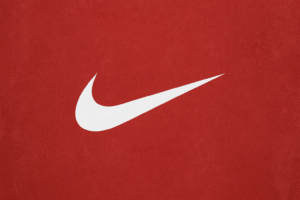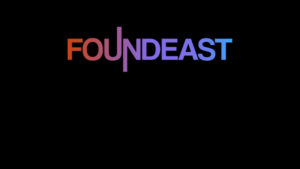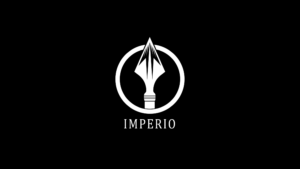You put your hands on the keyboard and you’re about to write…
But nothing happens. 😱
It’s that pesky writer’s block!
Unfortunately, it delays projects, pushes back other tasks, and reduces morale.
It doesn’t have to be that way though. There is a quick fix.
And, it’s called a checklist.
Great sales copy is emotional but that doesn’t mean you can’t be organized.
Templates, checklists, and similar resources help writers zip through projects without sacrificing quality.
I mean, who doesn’t want to save time and energy?
That’s why I enjoy using copywriting checklists every time I begin a new product and you should, too.
They contain all of the most important information to add to make copy pop. 💥
Use this twelve-point copywriting checklist to see the results yourself.
1. Clearly define the audience
Who are you selling to?
And no, “35 year old males in the United States” doesn’t fly.
That’s a guaranteed way to produce generic copy and campaigns.
You need to zoom in a small hyper-segment of customers like using a telescope.
As a matter of fact, companies that dedicated 81.6% of marketing budgets to personalization receive a 2x ROI or greater!
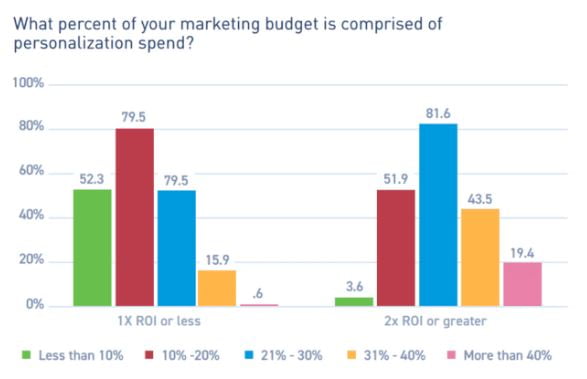
Unfortunately, marketers are guilty of aiming at large crowds and taking a shotgun approach.
On the flipside, copywriters need to place small segments under a microscope to understand their feelings, pain points, questions, and values.
Campaigns can be engineered around these elements to resonate with customers on a deep level and increase engagement.
But, you’re probably thinking “How do I do that?”
Firstly, I love leveraging market and industry reports.
These contain all of the latest data, trends, and opportunities within your market.
And no, you don’t have to spend thousands of dollars on Ibis reports.
Search for “keyword + free industry report” on Google to see what I mean.
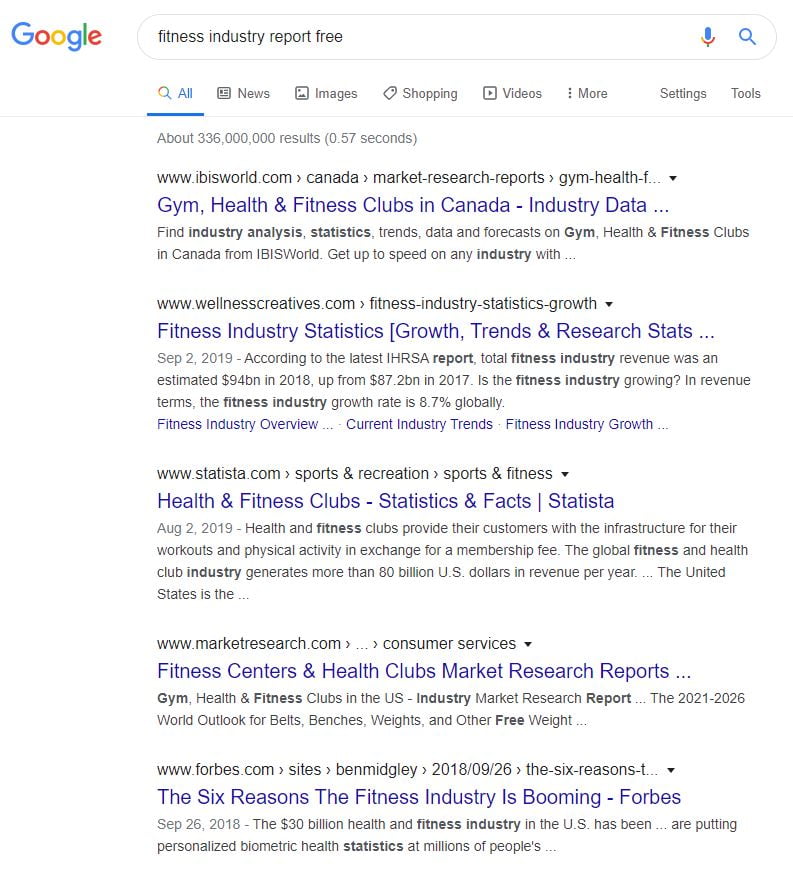
There will be endless resources for you to study customers through like this:

Use these to understand who the customers are, why they purchase products, and what they look for in brands.
Better yet, study competitor reviews to directly see what customers are saying.
These can be found on Google, Yelp, TrustPilot, and any major review website.
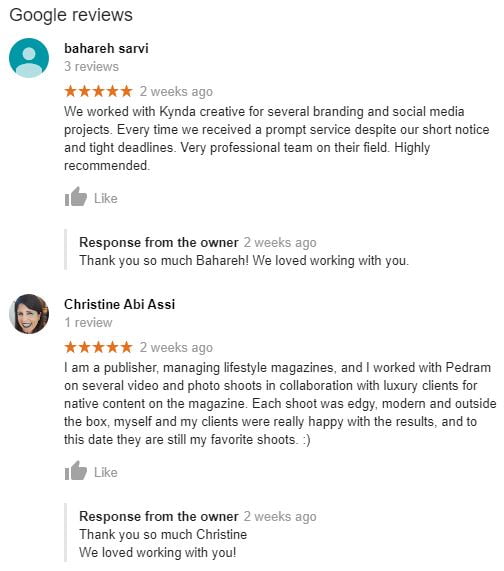
Reviews and testimonials directly mention the customer’s problem, how it was solved, and what they enjoyed about the overall process.
Use this data to create the most persuasive sales copy possible.
2. Define the problem you’re solving
What does a product do?
But, it’s not always the problem you’re thinking of.
For instance, what does a t-shirt do?
It keeps customers clothed, right?
Not really.
It gives them confidence, self-esteem, easily matches with other attire, and gives them a certain image. (Professional, young, etc.)
Clearly mentioning the problem a customer is experiencing will get them glued to the page.
Check out the sales pages for this weight loss product, for example:
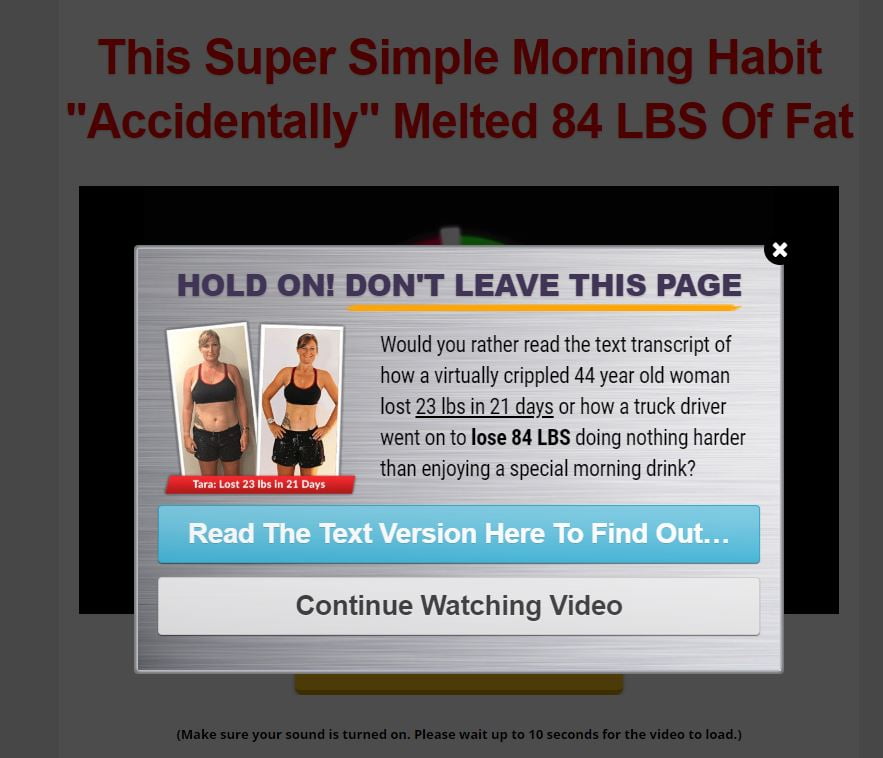
It clearly states losing weight in both the headline, popup, and video sales letter.
This works because—as I mentioned before—it resonates with the reader.
They’ll think “Ah, yes! Finally, a business that gets me.” on a conscious or subconscious level.
This is also what’s called priming in neuro-linguistic programming.
It foreshadows what the rest of the material and interaction with a business will entail. Learn more in my NLP copywriting article.
And remember, think emotionally.
Think deep.
What primal things are you solving?
Keep in the mind the seven deadly sins, as they are often why someone is buying something:
- Lust: “Get your ex-boyfriend back with this secret texting strategy”
- Gluttony: “Make so much cash with affiliate marketing you can make a money bed”
- Greed: “Lambo’s and private jets await you”
- Sloth: “Make $10,000/month with 5 minutes of effort”
- Wrath: “Show your bullies who’s tough with our 3-month muscle program”
- Envy: “Don’t you wish you looked as good as him?”
- Pride: “Everyone will be drooling over your new body”
3. What are the features and benefits?
Features = factual.
Benefits = emotional.
And, if there’s one thing I’d hope you learned so far, is that sales copy is heavily emotional.
Yeah, customers need to know what specs and features a product has.
But, it’s not truly why they’re buying it.
They’re purchasing it for the experiences and emotions it creates.
For example, is someone buying a gaming computer because of the insane graphics card and power supply?
Partly. However, it’s mostly because those components allow them to play their favorite games non-stop at high FPS (frames per-second) with friends.
They don’t get slowed down. They don’t get interrupted. They can enjoy their hobby.
This Amazon listing nails this strategy perfectly:
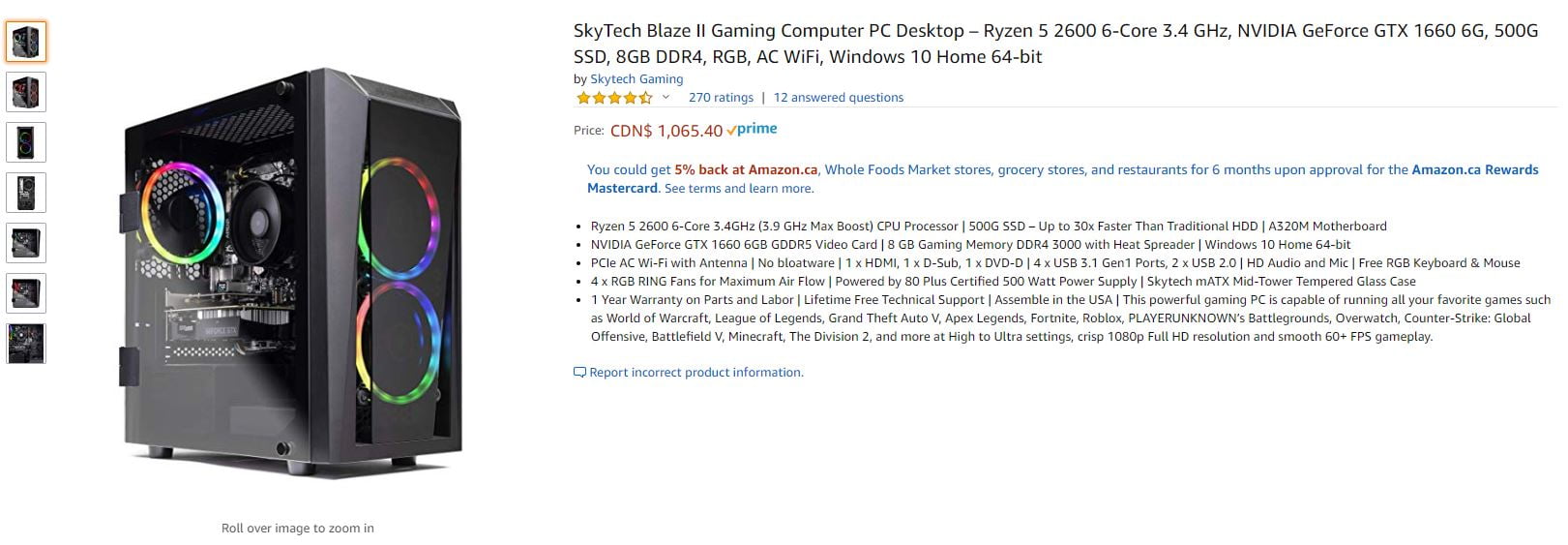
Some of the best lines include:
- “Up to 30x Faster Than Traditional HDD”
- “Capable of running all your favorite games … at High to Ultra settings, crisp 1080p Full HD resolution and smooth 60+ FPS gameplay.”
- “Get amazing performance and image quality while livestreaming to Twitch or YouTube.”
Next time you’re writing sales copy, clearly state the features followed by what benefit it creates for the customer.
4. What is the unique selling proposition?
What makes your product unique?
Does it blend into everything else on the market?
Displaying a unique value proposition communicates to customers why they should purchase from you and not a competitor.
Unfortunately, so many companies don’t mention a UVP and look basic.
UVP’s come in all shapes and sizes, too.
It doesn’t have to be a new technology that’s going to take us to Venus. It can be related to:
- Materials
- Craftsmanship
- Quality control
- Customer service
- Features
- Technology
- Content
- Branding
- Pricing
- Return and refund policies
- Personalization
- Etc.
Explain why any of these stand out from what’s on the market.
After all, customers want something new and fresh.—not what they’ve seen a million times before.
We love the latest and greatest. Look at iPhones and similar products.
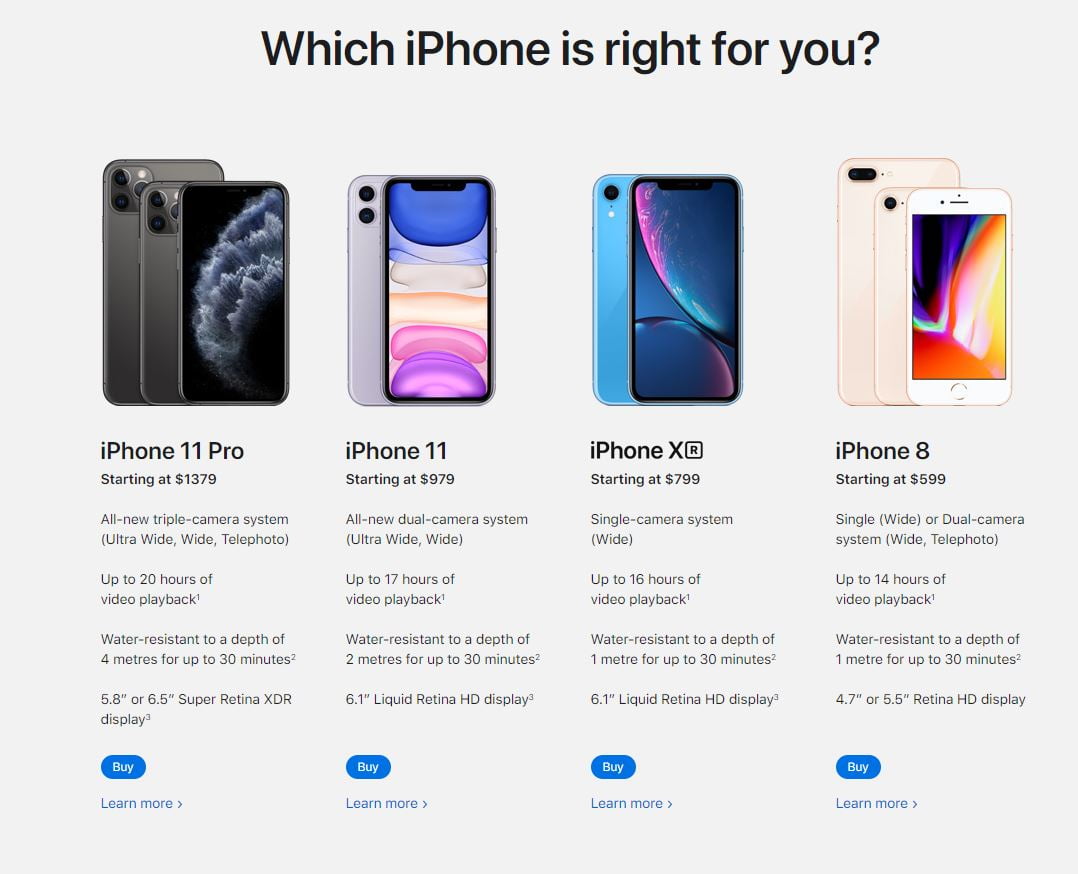
People line up all over the world because there’s a new product. Even if they don’t need it!
5. Overcome objections
As nice as it would be for customers to read our copy and whip out their credit card, it doesn’t always happen that easy.
The higher the price is, the more objections they will have.
They want to ensure their hard-earned money is in goods hands.
So, you have to earn it.
This goes back to my first point about understanding your customers.
They will object to things like pricing, features, benefits, etc.
And, you have to be ready with sword and shield to deflect them.
This plays into user experience, too.
Improving the customer experience and reducing churn are the two biggest priorities for companies right now.
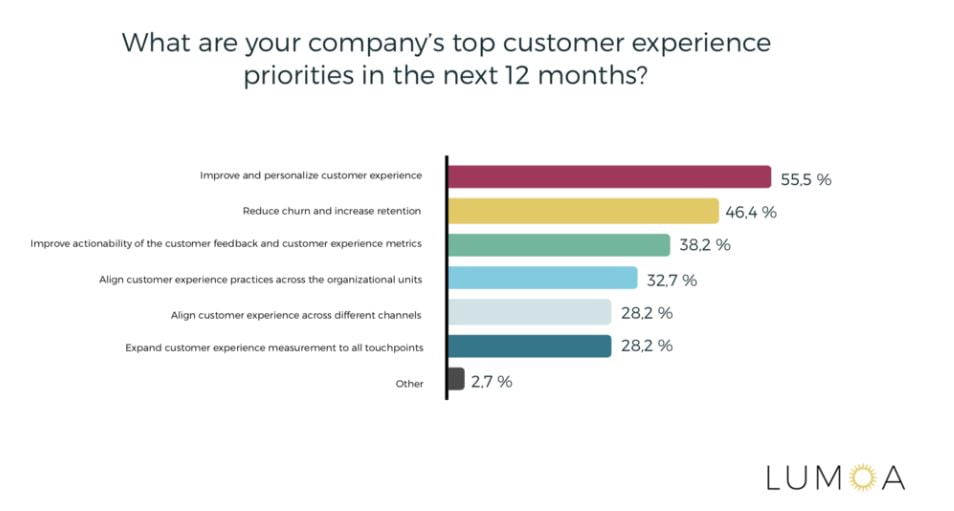
If readers can flow through the material with few questions and concerns, they’ll get to the point of sale faster.
Look at this landing page for John Crestani’s webinar:
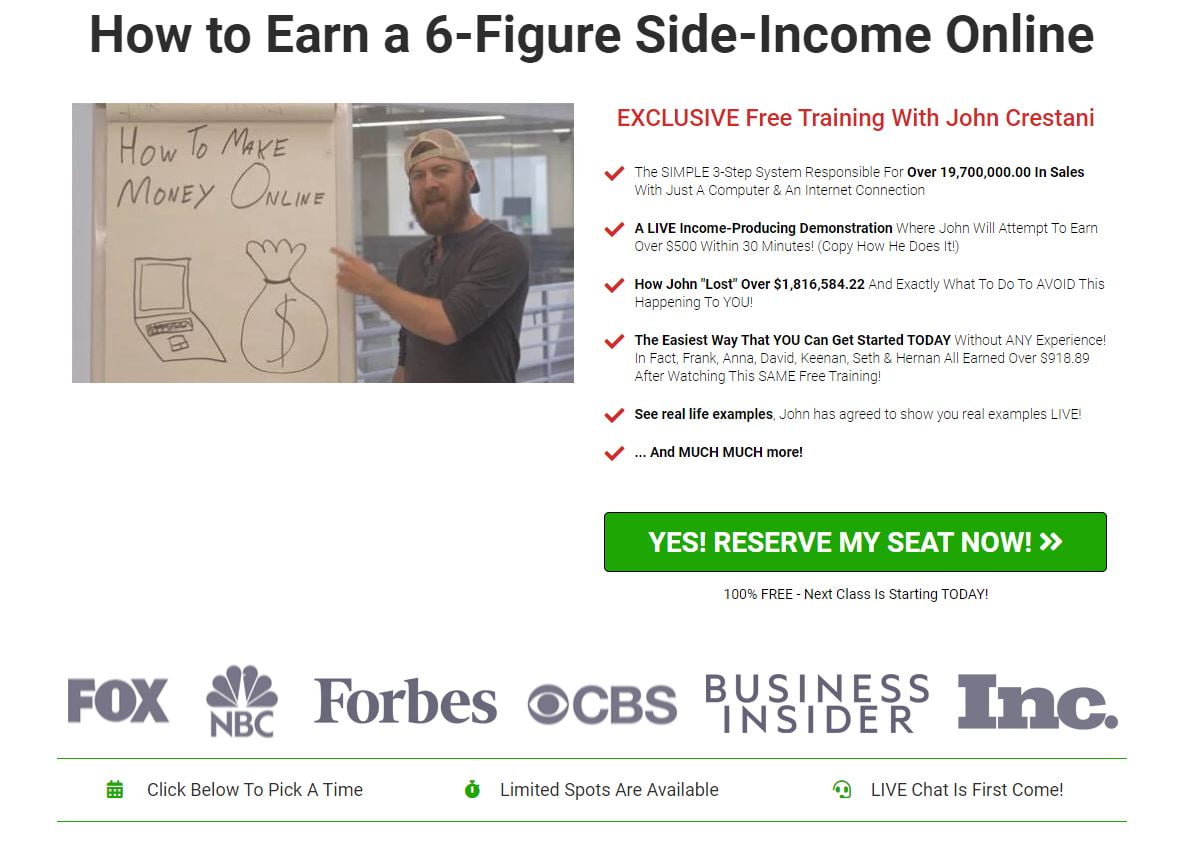
A user might ask themselves “Is this legit or worth it?” and its overcome in a few ways:
- Using a logo bar as social proof. If those brands trusted them, why shouldn’t the customer?
- Real-life examples will be included as proof the system works.
- Names of successful customers are used.
- It’s a live presentation and not recorded.
- It’s 100% free to attend.
As you’re writing copy, consider where customers will stop and demand more information. Provide it and you will gain their valuable trust.
6. Answer every question customers have
Think about the last time you bought something.
You probably wanted to know every little detail about the item.
This is especially true for larger purchases.
It’s critical to answer every possible question a customer would have for this reason.
They may include:
- What are the features?
- How much does it cost?
- How much does it cost to maintain?
- What are the shipping options?
- How long does shipping take?
- What are your return and refund policies?
- How can I contact your customer service team?
- Is the product safe?
- Who is the product for?
- Are there any discounts or coupon codes?
- What payment methods you offer?
- How do I use the product?
Some companies opt for an FAQ page to neatly summarize answers like Browns Shoes does here:
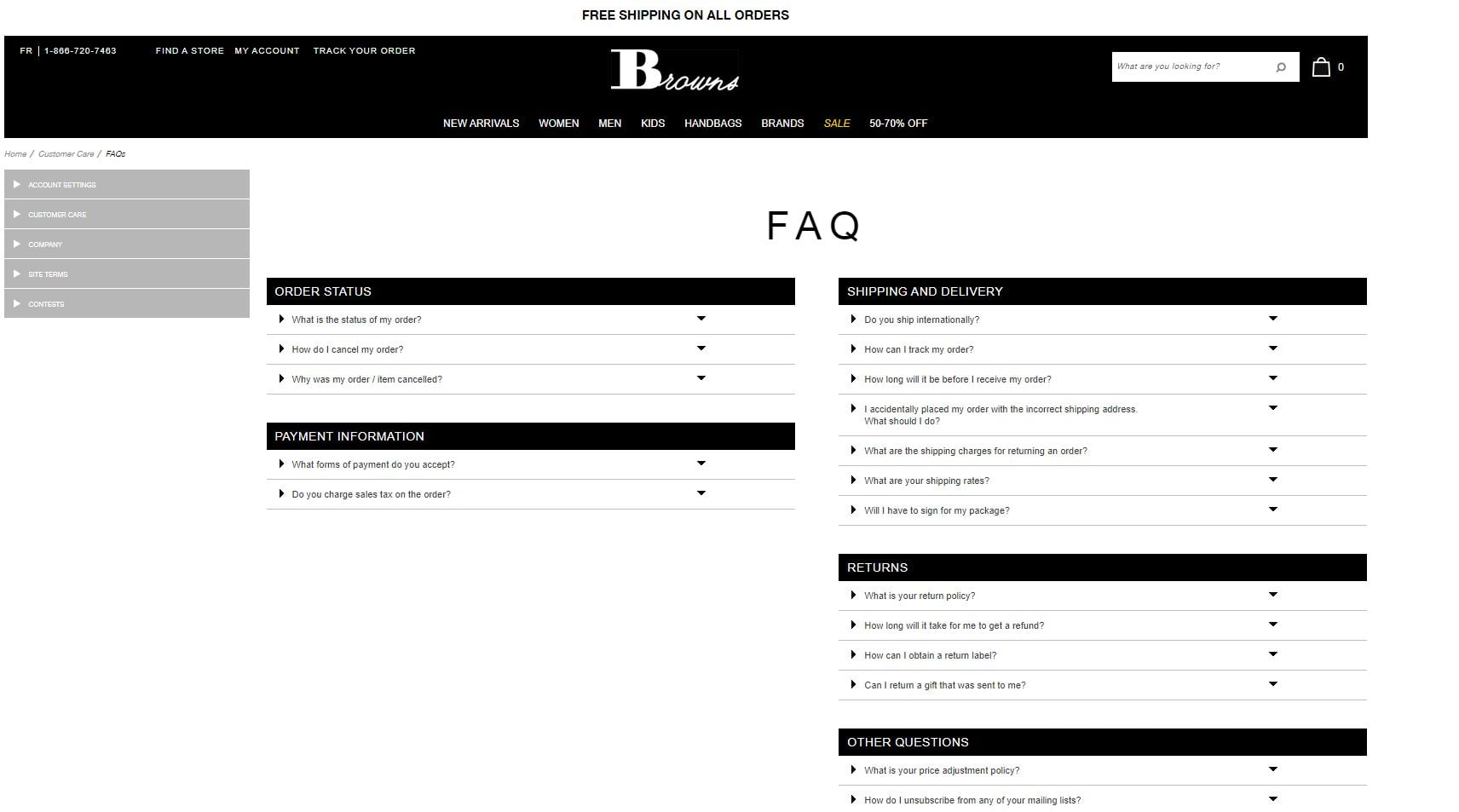
7. Calls to action
Last but not least, the call to action.
This is a staple copywriting technique that needs to be used as much as possible.
They are simply words or phrases that tell the customer what to do next.
They include:
- Click here
- Buy now
- Buy today
- Sign up
- Register
- Reserve your spot
- Don’t wait
- Get it now
- Get it today
- Shop
- Check out
- Etc.
Calls to action can range from a single word to an entire sentence, as well.
SEMrush uses the “Register” CTA on this page for a webinar:
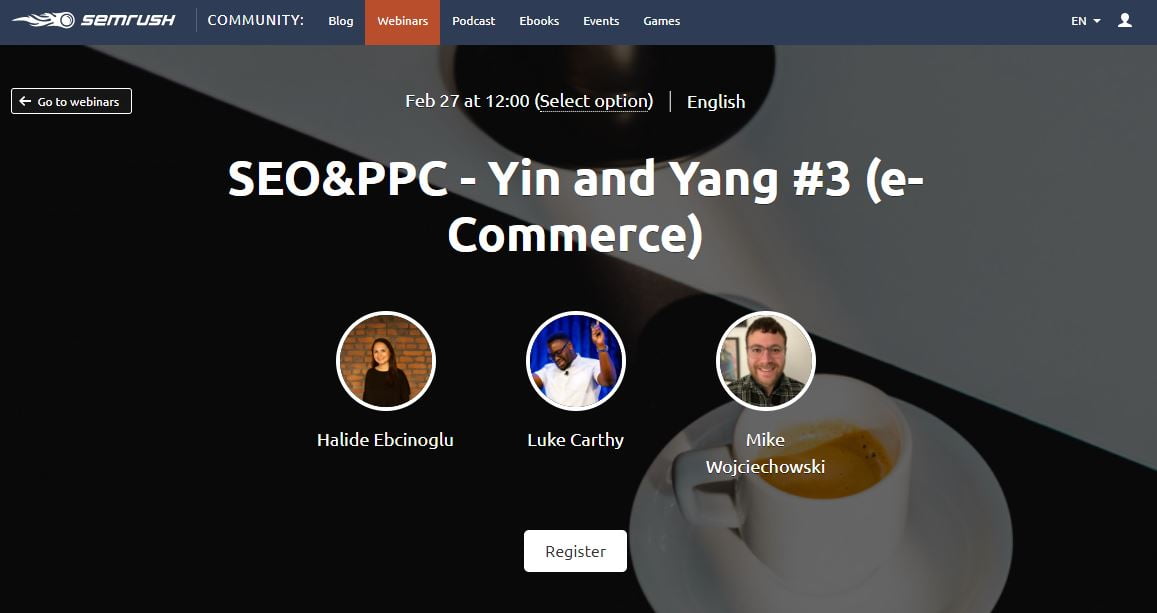
A call to action should be found approximately above every fold, too.
As you can see on the Moz homepage, there’s a clear CTA and then the fold is at the bottom:

When the user scrolls, they will see new content and another fold.
Having a call to action above every fold ensures the maximum amount of action can be taken on any given page.
8. What is the offer?
Don’t get the offer confused with features, benefits, or other parts of the product you’re advertising.
The offer is the total package. Everything from the features, benefits, pricing, order instructions, and how it will change the customer’s life.
Ideally, you are going to place the offer near the end of an advertisement to neatly summarize what they are getting.
There are five main components of a good offer:
- The product.
- The product’s price.
- The call to action.
- Bonuses.
- Risk reduction.
Let me elaborate on all of these.
Firstly, you have the product. As I’ve drilled into your head (presuming you’ve consumed my content before), it’s crucial to focus on the benefits of what you’re selling. Not just the features.
Remember, features are factual pieces of information like sizing, dimensions, colour, etc.
That’s cool. But, it’s not what makes customers take out their credit cards and convert.
Benefits do. These are the features do for the customer. Normally they provide some kind of health, financial, or emotional gain.
Take my copywriting courses for example. Some of the features include the modules you gain access to, my mentorship, exercises, and so on.
However, the benefits include increased confidence, more income, and saving years of energy learning a high-income skill yourself.
Next is pricing. While it’s easy to slap a number on a product, promote it, and wish for the best, often this ends with sad bank accounts.
The most important thing isn’t the price of the product itself but rather how it’s positioned and framed.
For example, I love using the psychological aspect known as anchoring. This is a cognitive bias in which consumers are influenced by another product, item, or piece of value.
Imagine you’re selling a $500 product. If you claim it’s worth $1,000 and strike out the original price, it will look like a steal. That’s one of the simplest and most effective ways to implement anchoring.
You can also use the method of minimizing pricing. This is done by breaking down the product’s price into smaller numbers to make it appear as a smaller purchase.
If you sell a subscription service for $50/month, you could frame it as the equivalent to $1.66/day.
Comparing is a similar tactic to try as well. This is where you compare the product’s price to a similar but much more expensive option.
You can see all of the time with online courses. They will compare the price tags to university tuition or coaches, making their products seem like a great deal.
9. Do you have a guarantee?
Most consumers will not purchase a product unless it’s risk-free.
Let me repeat that.
People will NOT buy your product unless they feel safe doing so.
This creates a frictionless path to purchase.
Think about yourself. (I know I can relate to this personally.)
Do you ever check for refund policies, return policies, warranties, and similar things when buying something?
Of course!
It’s a natural habit.
Precisely why you need to ensure that near the end of an advertisement you include a money-back guarantee, warranty, or satisfaction-guarantee.
Don’t worry about losing out on revenue. Very few people take advantage of guarantees anyways. It’s more of a mental comfort than anything.
10. Did you use a P.S.?
Emails and sales letters can be enhanced by the use of a postscript or P.S. for short.
Here’s a cool fact: the P.S. was invented back when we used typewriters. If you got all the way to the end of an advertisement but forget a key point, the postscript would include it.
As marketers and copywriters, we can use the P.S. Strategically. Unless, of course, you’re using a typewriter. (I hope not!)
I recommend summarizing the offer or main benefit inside the postscript.
Or, create a sense of urgency. Is there limited availability for what you’re selling? Do customers have a certain window of time before it won’t be available?
Social proof is great here as well. Mention a customer or student and the results they experienced with the product/service.
11. Have you identified the traffic temperature?
Not all traffic is the same.
Understanding the “temperature” of traffic will help you write and deliver the best sales copy and advertisement.
This relates to the marketing funnel and buyer journey. There are three types to be aware of:
- Cold: They don’t know you or what you sell. These prospects require education, social proof, and authority building. Use top of the funnel content and lead magnets to get them into your database. Sell lightly.
- Warm: These are individuals that have purchased tripwire products, opted into newsletters, or downloaded gated lead magnets. You can sell entry level products to these people.
- Hot: Finally we have people that have already purchased from you and trust you. These are the customers you can directly sell to and provide high-ticket offers.
12. What is the market stage?
Similar to traffic temperature, it’s key to identify the stage the market is in of the product you’re selling.
This will change how you position products and advertise them.
The first stage is where you are the only business selling a product. It’s a brand new vertical, niche, and industry.
While this is quite rare, it does happen. You need to be simple, direct, and make a significant claim. Provide the product as a solution and prove it works.
The second stage is sophistication. Other similar products have been sold and consumers are aware of how they’re advertised and positioned.
I recommend finding the successful companies in the particular niche, reverse-engineering their offer, and ENLARGING it.
Do they help people increase their income by 10% month over month? Help them increase it by 20%!
In the third market stage, consumers have heard it all. There are many options on the market and they are fatigued.
You must provide a new unique mechanism to stand out. This is a value proposition that they can not get from any other product. Create or find something about what you’re selling that can not be copied (or, at least, it would be very difficult.)
Wrapping up this copywriting checklist
Copywriting is difficult.
There’s no shortage of steps, processes, and material you have to analyze.
But, you can make it easier on yourself by using a checklist.
This makes sure that everything you write includes the most important information.
Here’s a summary of the copywriting checklist I covered today:
- Clearly define the audience you’re targeting to maximize personalization.
- State the problem that is being solved by using your product.
- State the features and benefits of the product.
- Explain any unique selling propositions.
- Predict and overcome objections.
- Provide answers to questions customers normally have.
- Add a call to action above every fold.
- Summarize the offer you are presenting.
- Give a risk-free guarantee.
- Use the P.S. to deliver more value.
- Identify the traffic temperature.
- Identify the market stage.



